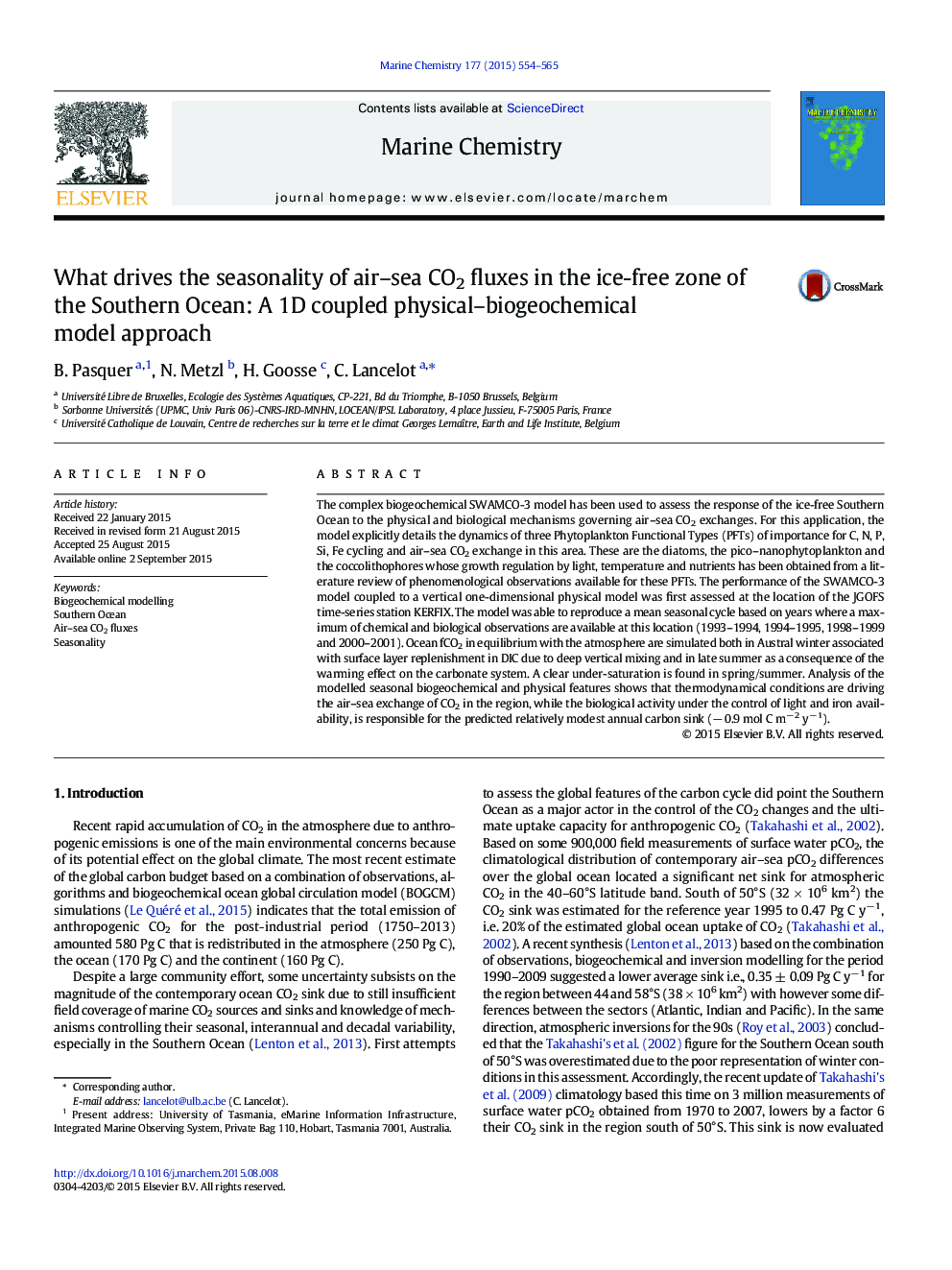| کد مقاله | کد نشریه | سال انتشار | مقاله انگلیسی | نسخه تمام متن |
|---|---|---|---|---|
| 1262723 | 971889 | 2015 | 12 صفحه PDF | دانلود رایگان |

• The 1D biogeochemical model SWAMCO-3 is implemented in the open HNLC Southern Ocean.
• Biological activity drives the summer sink; deep mixing the winter signature.
• Seasonal temperature offsets the biology and deep mixing effects on surface pCO2.
• A weak CO2 sink (< 1 mol C m− 2 y− 1) is simulated.
• Coccolithophores represscarbon uptake but marginally.
The complex biogeochemical SWAMCO-3 model has been used to assess the response of the ice-free Southern Ocean to the physical and biological mechanisms governing air–sea CO2 exchanges. For this application, the model explicitly details the dynamics of three Phytoplankton Functional Types (PFTs) of importance for C, N, P, Si, Fe cycling and air–sea CO2 exchange in this area. These are the diatoms, the pico–nanophytoplankton and the coccolithophores whose growth regulation by light, temperature and nutrients has been obtained from a literature review of phenomenological observations available for these PFTs. The performance of the SWAMCO-3 model coupled to a vertical one-dimensional physical model was first assessed at the location of the JGOFS time-series station KERFIX. The model was able to reproduce a mean seasonal cycle based on years where a maximum of chemical and biological observations are available at this location (1993–1994, 1994–1995, 1998–1999 and 2000–2001). Ocean fCO2 in equilibrium with the atmosphere are simulated both in Austral winter associated with surface layer replenishment in DIC due to deep vertical mixing and in late summer as a consequence of the warming effect on the carbonate system. A clear under-saturation is found in spring/summer. Analysis of the modelled seasonal biogeochemical and physical features shows that thermodynamical conditions are driving the air–sea exchange of CO2 in the region, while the biological activity under the control of light and iron availability, is responsible for the predicted relatively modest annual carbon sink (− 0.9 mol C m− 2 y− 1).
Journal: Marine Chemistry - Volume 177, Part 3, 20 December 2015, Pages 554–565